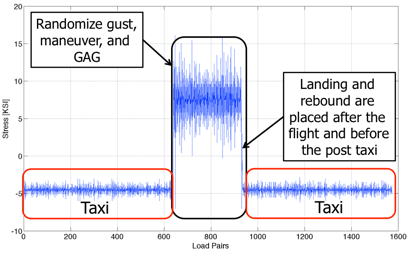lLouie
Student
- Jun 19, 2024
- 76
Hi
I have written about fatigue here many times. I found a source that I thought might be helpful, and I have a question.
To find the stresses in each spectrum (taxi, cruise), should I consider the fuel mass used by the aircraft in that spectrum? For example, should I include the fuel mass spent during 100 flights to calculate 1g stress in cruise? Or should I take the critical mass?
You can find the source in attachment.
I have written about fatigue here many times. I found a source that I thought might be helpful, and I have a question.
To find the stresses in each spectrum (taxi, cruise), should I consider the fuel mass used by the aircraft in that spectrum? For example, should I include the fuel mass spent during 100 flights to calculate 1g stress in cruise? Or should I take the critical mass?
You can find the source in attachment.

